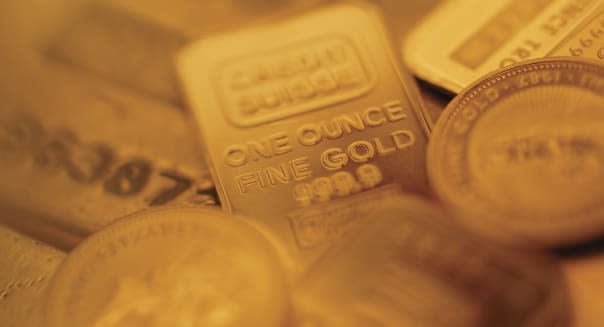Why Gold Will Eventually Be Almost Worthless

One of my favorite episodes of the seminal sci-fi show "The Twilight Zone," titled "The Rip Van Winkle Caper," involves a group of criminals who steal $1 million worth of gold bars from a train en route from Fort Knox to Los Angeles. After successfully pulling off the heist, they head to a desert cave, where the genius of the group has constructed a clever set of chambers that will put them in a state of suspended animation for 100 years, after which they will emerge not only rich, but immune from prosecution due to the passage of time.
Of course, as with every episode of "The Zone," there is a Serling-esque twist at the end. After they reawaken, one by one, the thugs eliminate each other, until only the genius is left lying by the roadside in the hot sun, out of water and miles from town. A couple in a futuristic car stops to help, and he offers them a bar of gold for a drink of water, but he ultimately succumbs to the heat and dies.
The couple is puzzled as to how someone ended up in the middle of the desert in the midday sun, but more so, why he offered up the gold as if it were really worth something. You see, 50 years prior, gold had lost its value when scientists figured out how to manufacture it.
Dun-dun-daaaaaah! ... Cue the ironic narrative and pan up to twinkling stars in the night sky.
Alchemy aside, we're not going to figure out how to manufacture gold anytime soon, but I believe there's another reason that gold will eventually lose most of its value.
What Gold Did Once, Technology Now Does Better
Historically, gold has been used as a store of value, something you could carry across borders and cultures and understand that it could be exchanged for goods, services or even cash. %VIRTUAL-WSSCourseInline-762%It's rarity, malleability, and attractiveness made gold the preferred metal when making jewelry -- something you could give someone, or yourself, that expressed value.
The demand and trade in gold created markets in the yellow metal, and naturally, derivative products such as gold futures and ETF's were developed on the underlying commodity -- securities which became staples of the financial services industry.
Stats for 2012 -- the most current year available -- show that 90 percent of the gold produced each year is used for jewelry or investments, with only 10 percent going to industrial use. That means that almost all the demand is based on the archaic idea of gold as a universal store of value. But every day, the Internet and the free flow of data undermine that concept.
It's no longer necessary to store value in an inefficient and -- for practical purposes -- non-portable format like gold. Information flow is no longer restricted by borders, and a small, lightweight piece of plastic can reveal the value you own in the form of currency anywhere there's an Internet (or even a good phone) connection, eliminating gold's usefulness.
Who Wants Gold Most?
More than half of the world's jewelry demand for gold comes from India and China, countries that have 13 percent and 1.1 percent broadband penetration, respectively. %VIRTUAL-article-sponsoredlinks%Almost 30 percent more of the demand for jewelry gold comes from underdeveloped countries with similarly low broadband penetration rates. But as the populations of those countries continue to gain access to cheap data transfer services, they'll increasingly move to rely on electronic or, if you will, virtual stores of money.
As this trend increases, it will become less and less profitable for the financial industry to deal in gold-based products, which will accelerate the drop in demand. Eventually, gold will only have a worth based on industrial demand, and little, if any, intrinsic value.
This won't happen overnight, of course. Habit and tradition take time to die out. Gold's value is based on faith –- like the faith you have in the U.S. dollar -- and there are many vested interests who want gold to retain its value the way it has for thousands of years.
The Internet in its current form, however, is barely 10 years old, and has yet to truly reach the masses. When it does, we've seen the speed at which technology changes habits and allows people to let go of closely held beliefs. It'll be no different with gold. Someday you'll see those gold coins, jewelry and bars in the same way you now look at a set of bound encyclopedias, a Beanie Baby, or a BlackBerry: something you once would have paid a lot to own, but that's now an obsolete anachronism, valuable only for its attractiveness and nostalgia value. In other words, not very valuable at all.
No man is an island, or even a peninsula, so I encourage your feedback in the comments below. And don't forget to pick up my book, "Trading: The Best of the Best - Top Trading Tips for Our Time" via Amazon.
More from Brian Lund


